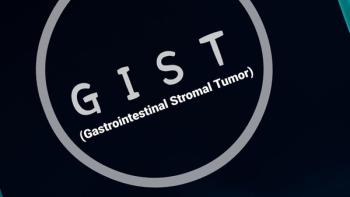
Quitting Smoking After Cancer Diagnosis Can Add Another Year of Life
Key Takeaways
- Smoking cessation in advanced-stage cancer patients can extend life by about one year, highlighting its importance in cancer care.
- Innovative models like point-of-care tobacco treatment are cost-effective and can be integrated into oncology visits, enhancing patient support.
Dr. Li-Shiun Chen sat down with CURE to discuss study findings that overturn long-held assumptions about the impact of smoking cessation in cancer care.
Dr. Li-Shiun Chen sat down with CURE to reveal study findings that overturn long-held assumptions about the impact of smoking cessation in cancer care.
The research, conducted through the National Cancer Institute, followed more than 13,000 individuals with cancer and evaluated who quit smoking in the first six months after an oncology visit. The study confirms that patients with stage 3 or 4 cancer who stop smoking gain approximately one additional year of life compared with those who continue. This survival advantage was consistent across cancer types and stages, emphasizing that it is never too late for people with cancer to benefit from quitting.
In the interview with CURE, Chen explains that patients who continue smoking face a much higher risk of death, yet only about one in five quit within six months, and just one in seven receive meaningful support.
Chen is director of the Smoking Cessation Program at Siteman Cancer Center, WashU Medicine, where she is also a professor of Psychiatry and director of Tobacco Treatment Program
CURE: Your study highlights that patients with stage III or IV cancer who quit smoking gained approximately one additional year of life compared to those who continued. How do you interpret the magnitude of this survival benefit in the context of existing treatment outcomes for advanced-stage cancer?
Chen: I want to quote a patient we interviewed recently. She said that there is not a day that passes without her thinking about survival every day. Survival is such an important goal for all people with cancer. We are very curious about whether making a lifestyle change, such as reducing or quitting smoking, really does anything for survival. We are very happy (and also a little surprised) to find that you can actually live longer, up to one year, if you quit smoking, even if you have advanced-stage cancers.
I think it is important to put this in the context of other treatments. Surgery, radiation therapy, chemotherapy, and immunotherapy are common treatments that people with cancer face, and surgery typically gives the best outcomes. Surgery can add years to your life if it can cure the cancer. But smoking can lower oxygenation of the tissue and increase complications, and there is approximately 30% more mortality from cancer. That is why surgery is great, but being able to quit smoking really makes surgery work better.
Even with radiation therapy (which has a wide range of outcomes and can add months to years to people’s lives), hypoxia caused by smoking can lower the effectiveness and increase the toxicity of radiation therapy. Now, when it comes to chemotherapy, it is challenging. It can add two months up to 12 months of life. In this context, a lifestyle change such as reducing smoking has tremendous benefit. It does not cost as much money as some very expensive treatments, so we think it is tremendous.
Most importantly, I think another quote from an oncology provider is relevant: many patients and providers feel like the cat is out of the bag, that there is no use in quitting, and they should just get the most expensive and strongest treatment. However, the cat is not out of the bag. There is a lot that people can do, in their own hands, to prolong their lives. We feel this finding actually brings a lot of hope for both people with cancer and their providers, encouraging them to think not only about very toxic treatments but also about lifestyle changes.
The research underscores that smoking cessation should be considered the “fourth pillar” of cancer care. What are the key steps healthcare systems can take to better integrate tobacco treatment into routine oncology care?
I think everyone wants to do the right things. All the providers really want to help patients, and all healthcare systems really want to include tobacco as part of their care. Traditionally, most hospitals or clinics use this referral-to-specialist model, so if anyone smokes, they see the specialist to help them quit smoking. That model has worked very well when there is a lot of funding to support these specialists. But as we know, the healthcare budget is limited, and some of these programs are funded by research grants. As we know, the budget becomes a very important constraint.
We have pioneered this innovative care model we call point-of-care tobacco treatment. We make sure that when people come to the cancer center for their oncology visit, right after assessing smoking, we offer brief advice (the best thing for your health is to quit smoking) and connect them to free support like quitlines or the SmokeFree text program, done by oncology staff. This model is only possible with a lot of help from technology. Electronic health records allow referrals without needing to fax; you can actually click, and the referral occurs. You can click, and the patient gets a welcome text.
We are learning that this point-of-care model, which definitely receives a lot of help from technology, costs approximately $70 per patient or less, compared with the traditional model, which costs $500 or more, and sometimes ranges into the thousands of dollars.
The question is about how healthcare systems can address smoking. Our answer is that there are multiple different care models the healthcare system can choose, and we have to choose the ones that fit our system and our resources. Through the Cancer Moonshot Initiative, we looked at 28 large cancer centers and what they do, the successes and the lessons learned. We are learning that the traditional referral model and the point-of-care model are the two most common models that cancer centers use.
We are launching a new study called IMPACT, supported by the National Cancer Institute, to compare in 72 clinics which models work the best in which settings, because one size does not fit all. Depending on the site’s resources and health technology levels, we are going to find out the best way to incorporate tobacco treatment into care. This is a national study that involves Washington University, the University of Pennsylvania Cancer Center, Vanderbilt Cancer Center, and the VA.
I think it is very important to know that everyone wants to do the right things, but we have to make it easy. If we make it easy, it will happen. If we make it really hard, it is really hard to scale or sustain even the best treatment.
Despite the clear survival benefits, only approximately one in five smokers in your study quit within six months. What barriers continue to prevent higher rates of smoking cessation among individuals with cancer, and how can clinicians more effectively address them?
In this process, we learned so much from people living with cancer, or what we call cancer survivors. When people have cancer and they smoke, they experience a lot of blame and guilt. I will say the top barrier is that tobacco treatment is not offered to people with cancer. We assess smoking all the time, but typically, after that, we say, “Okay, we will try to refer you,” and the referral may or may not happen. Strikingly, out of all cancer patients, only approximately 15% (one in seven) get help to address smoking, and six out of seven are not getting any help. It is not offered to them, or patients did not ask. A major barrier right now is that among cancer survivors who smoke, only one in seven are offered tobacco treatment.
We want to make sure that offering is part of cancer care. A lot of barriers existed when we started the research. Our oncology cancer center providers said, “Dr. Chen, our patients have end-stage, stage IV cancer. They are dying. They are so sick. What is the point? Why don’t we just let them have high quality until the end?” It was unclear. We know smoking causes people to die 12 years early, but we did not know whether patients with end-stage cancer could benefit from smoking cessation. Another pushback was, “Dr. Chen, you should go to primary care, because here everyone already has cancer. What is the point of addressing tobacco when you already have cancer?” We did not know either, so we looked at the data. We wanted to answer two important questions: If you have stage 4 cancer, do you live longer if you quit smoking? And if you already have cancer, is talking about smoking cessation after diagnosis too late?
Another barrier is that people do not really know whether there is real benefit in addressing this as part of cancer care. The data is very powerful and can transform the culture, and now we want to make sure the cancer appointment is not complete if you do not address smoking.
I talked about the barriers of lack of resources and lack of time. We use a team-care approach, not just doctors, who are very busy. When medical assistants room you and ask about smoking, they can immediately say, “I can connect you with free counseling, and the best thing for your cancer and health is to quit smoking.” Nurses can review patient interest from the patient portal and then be able to pin the medication for them.
Another important barrier people do not understand is that when you smoke and you have cancer, if you get treatment, you are three to four times more likely to succeed in quitting compared with people who do not have treatment and are just interested in quitting. That huge boost in success is real and present. We are hoping this is a moment when we can move forward and overcome barriers such as lack of time, lack of resources, lack of utility, and lack of understanding of true clinical significance, and really help people not only realize the benefit but also have a good method to achieve it.
For more news on cancer updates, research and education,





